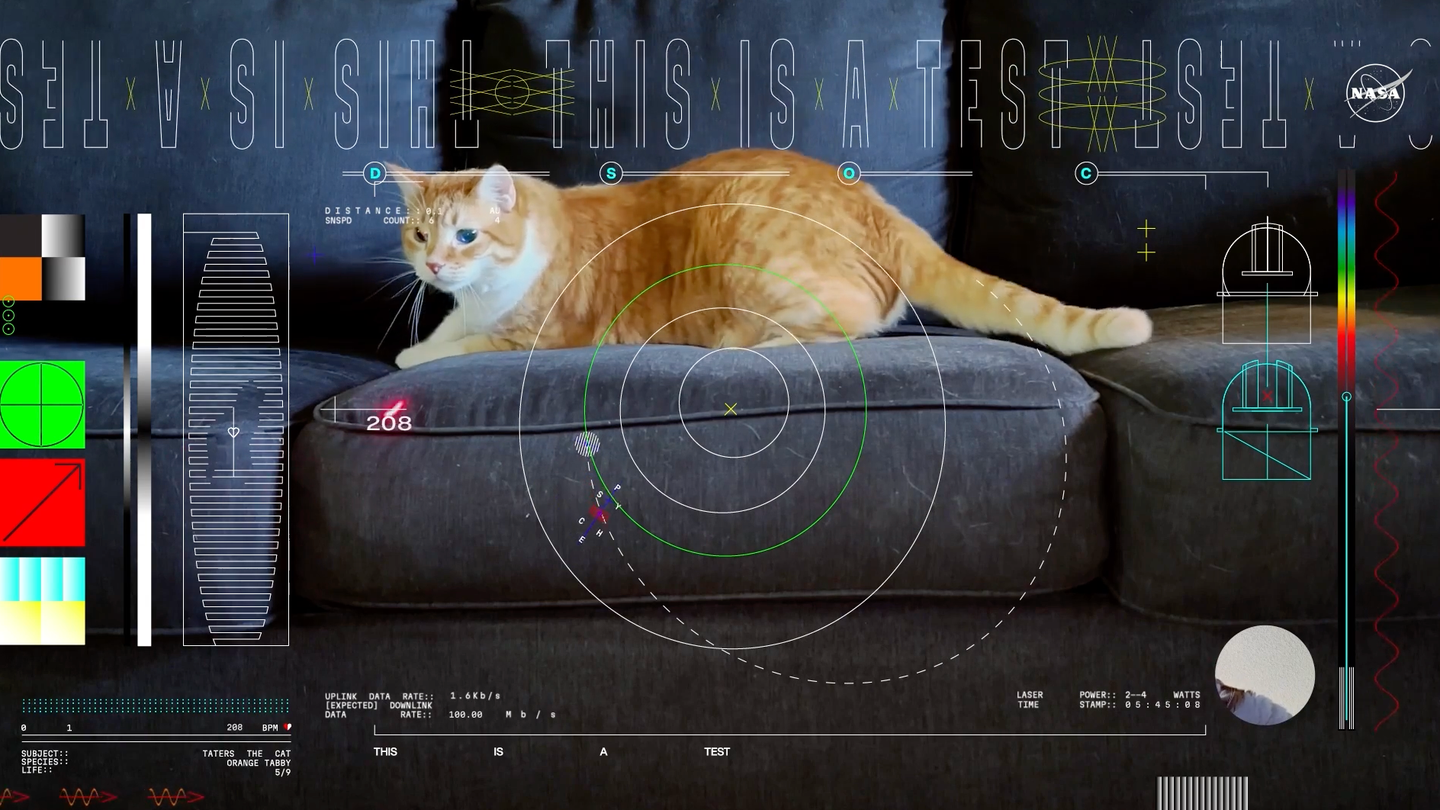NASA beams first video from deep space… of a cat named Taters

A screengrab from NASA’s video beamed from outerspace featuring an orange tabby named Taters.
SUMMARY
Who doesn't love a good cat video? Well, apparently NASA is on board. On December 11, the organization proudly beamed its first ultra-high definition streaming video from a record-setting 19 million miles away (about 80 times the distance between Earth and the moon). And although they could choose from literally any video in the universe, they created one of an adorable cat named Taters chasing a laser.
According to NASA, the demo transmitted the 15-second test video via a cutting-edge instrument called a flight laser transceiver. The video signal took 101 seconds to reach Earth, sent at the system’s maximum bit rate of 267 megabits per second (Mbps). Capable of sending and receiving near-infrared signals, the instrument beamed an encoded near-infrared laser to the Hale Telescope at Caltech’s Palomar Observatory in San Diego County, California, where it was downloaded. Each frame from the looping video was then sent “live” to NASA’s Jet Propulsion Laboratory in Southern California, where the video was played in real-time.
Credit: NASA/JPL-Caltech
“This accomplishment underscores our commitment to advancing optical communications as a key element to meeting our future data transmission needs,” said NASA Deputy Administrator Pam Melroy on the NASA website. “Increasing our bandwidth is essential to achieving our future exploration and science goals, and we look forward to the continued advancement of this technology and the transformation of how we communicate during future interplanetary missions.”
And because they used a laser, the fact they featured a cat chasing a laser was just icing on the cake.
“One of the goals is to demonstrate the ability to transmit broadband video across millions of miles. Nothing on Psyche generates video data, so we usually send packets of randomly generated test data,” said Bill Klipstein, the tech demo’s project manager at JPL. “But to make this significant event more memorable, we decided to work with designers at JPL to create a fun video, which captures the essence of the demo as part of the Psyche mission.”
Who is this cat?
Taters is an orange tabby and the pet of Jet Propulsion Laboratory employee Joby Harris. Taters was selected because A) everyone loves cat videos, and B) For a little historical nod: beginning in 1928, a small statue of the popular cartoon character Felix the Cat was featured in television test broadcast transmissions. The graphics illustrate several features from the tech demo, such as Psyche’s orbital path, Palomar’s telescope dome, and technical information about the laser and its data bit rate. Tater’s heart rate, color, and breed are also on display.
More milestones
NASA also recently achieved another milestone, first light. According to their website, the tech demo achieved “first light” in the early hours of Nov. 14 after its flight laser transceiver – a cutting-edge instrument aboard Psyche capable of sending and receiving near-infrared signals – locked onto a powerful uplink laser beacon transmitted from the Optical Communications Telescope Laboratory at JPL’s Table Mountain Facility near Wrightwood, California.
“When we achieved first light, we were excited, but also cautious. This is a new technology, and we are experimenting with how it works,” said Ken Andrews, project flight operations lead at JPL. “But now, with the help of our Psyche colleagues, we are getting used to working with the system and can lock onto the spacecraft and ground terminals for longer than we could previously. We are learning something new during each checkout.”
Bravo, NASA! Thanks for working to infinity and beyond.
WATCH the video:

READ MORE ON WATM:
SHARE
